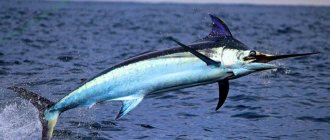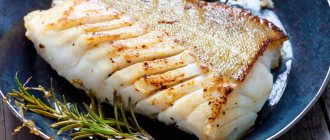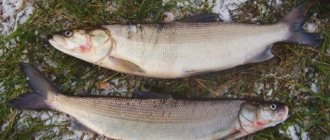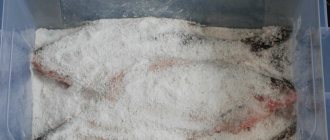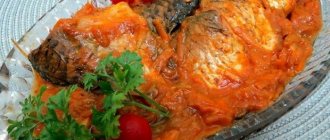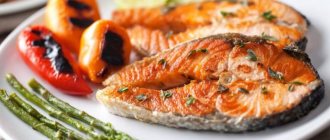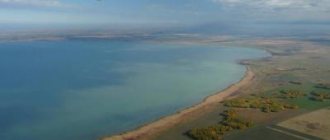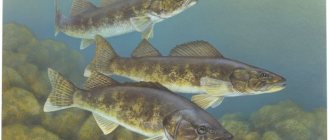General information
This fish is valuable due to the presence of nutrients. Meat that does not have small bones contains a lot of fat, fatty acids, protein, and microelements. The product is also consumed raw, and people are not afraid of poisoning.
Peled avoids currents and therefore rarely goes out to the open sea. It is known for its lake-river lifestyle and spawns in the fall. Mass spawning occurs in the 6th year of life. The fish lives no more than 11 years. Its peculiarity is its interesting coloring. These water inhabitants feed on crustaceans and zoological plankton.
Are Peled and Cheese the same fish?
You can often hear the question: are peled and cheese fish the same fish or are they different species? We can say with confidence that peled and cheese are one and the same. “Peled” is the official name of the fish Coregonus peled, and “cheese” is a folk, local name. In some localities it is believed that the names “peled” or “curd” are applied to this type of whitefish depending on their size: peled is younger and smaller, peled is older and larger; There is also a version regarding the preferred habitat of the peled: supposedly the peled is a lake whitefish, and the whitefish is a river whitefish; however, these are just legends and speculation. Peled or cheese is just a name that does not change the essence of this fish. But the point is that peled or cheese is a delicious delicacy of the northern fish. There are practically no small bones in the cheese, and the pulp contains a large amount of fat, saturated with essential fatty acids, highly digestible protein, vitamins, micro- and macroelements, which makes peled not only tasty, but also extremely healthy food.
Beneficial features
Regardless of where peled is found, its meat is highly valued due to its special properties:
- blood sugar levels normalize;
- getting rid of excess weight;
- prevention of constipation;
- elimination of bad breath;
- irritability and depression decrease;
- sleep improves.
Due to the high content of chromium, potassium and phosphorus in fish, its inclusion in the diet has a beneficial effect on well-being and health. The product has a positive effect on the entire body. This delicacy should be included in the diet of pregnant and nursing mothers, and during menopause and diets, it is recommended to eat fish meat. Contraindications include allergies.
Benefits and harms
Peled is considered a tasty and tender fish; it can be deliciously prepared in any form. Curd meat contains large amounts of chromium, magnesium, calcium, potassium, and phosphorus. These elements have a beneficial effect on the body:
- normalizes blood sugar levels;
- helps eliminate excess fat deposits;
- relieves constipation;
- helps with insomnia;
- eliminates bad breath;
- improves blood circulation;
- helps cope with nervous disorders and depression;
- improves digestion processes;
- normalizes cholesterol in the blood.
Fish is very useful for pregnant women and nursing mothers. Peled is useful for people of any age. It is recommended to consume at least 2 times a month for health benefits.
However, despite all the beneficial properties of fish, it should not be consumed much or often. This can cause the side effect of an allergic reaction, most often in children. Large consumption of this type of fish can cause nausea, headache and heaviness in the stomach. There are no carbohydrates in it. Thanks to its valuable composition of minerals, fatty acids and proteins, it reduces the risk of cancer. To protect yourself from harmful substances, it is advisable to buy peled in stores.
The calorie content of peled is 125.9 kcal per 100 grams of product. It is recommended to include it in the menu for a balanced diet, but not to consume it in excess of the norm. It is recommended to eat no more than 2-4 servings per week for health benefits.
Habitat
Where are peled found? It lives in the rivers of the Arctic Ocean, Siberia and the Urals. It is considered unpretentious to living conditions, which is why it is even grown. Thanks to its tender meat, fish is in demand among lovers of delicacies.
Where else are peled fish found? In the ocean basin it is found from Mezen to Kolma. These marine inhabitants are found in artificial seas and lakes. Where are peled found in Russia? It can be found in northwestern reservoirs; the fish is acclimatized in the central part of the country.
Peled is widespread in the water systems of the Yamal Peninsula. It lives in the Yuribey rivers, in the bays of Munga, Kamennaya, Seyakha. Distributed in lakes Heito, Yambuto, Svetloe. Where is peled found in Russia in the Urals? Fish are often found in the waters of the Chelyabinsk region - Alabuga, Argayash, Karagaykul. It can be caught in the Amur and its tributaries.
Where are peled found in Siberia? It also lives in Siberian rivers, as well as in the lakes of the Yamal, Taz and Gydan tundras. The fish feeds all year round, except during breeding times.
Breeding cheese in a pond
Peled fish is recommended as a breeding object in ponds and lakes, where under favorable conditions it can produce high fish productivity. It survives in lakes where the whitefish of the Baltic basin cannot live.
Curd fish can be successfully bred in carp feeding ponds and acclimatized in lakes. It is advisable to create fish farms specializing in the cultivation of commercial and broodstocks of peled (for the production of caviar and juvenile cheese). When artificially rearing peled in ponds, it exhibits a fairly high growth rate and a tendency to slide off when water is discharged from the pond much earlier than farmed carp.
Photo of catching curd fish (peled) in a pond fish farm
This biological feature is used to catch it from ponds when grown with carp. When the pond is lowered, the fish catcher is blocked with nonsense and all the peled end up in it. As it fills, the nonsense is replaced.
It is very important not to injure young of the year intended for wintering.
After catching, the planting material is thoroughly washed and only then transported to the wintering pond. Peled also feeds in winter, as a result of which it overwinters without waste. In ponds, peled tolerate high temperatures of 26-28°C. When reared together with carp, fingerlings of peled grow in ponds up to 120 grams, two-year-olds - up to 500 grams.
Two-year-old peled are raised in fish ponds together with carp. The stocking density of curd fish is first adjusted according to zooplankton biomass. The amount of peled should be twenty percent of the total fish production. The waste of two-year-old raw fish during the summer is 15%.
When planting two and a half thousand larvae per 1 hectare, the commercial return of cheese is up to 30%, while the average weight of fingerlings is 130-160 grams, the yield is up to 1.1 centners per 1 hectare. Fish productivity when planting 1 million larvae reaches 100-400 centners (using the example of Lake Karaguz in the Chelyabinsk region). For the Chelyabinsk region, 1 million peled fish larvae provide about 8 tons of fish. The weight of two-year-old cheese in the lakes reaches 560-670 grams, the fish yield from 1 thousand yearlings is 2.4 centners. The commercial return from peled yearlings is 41, from larvae - 22%.
Photo of peled caught during winter fishing
Fishing Features
Catching peled has some difficulties, which is not typical for other marine life.
- If there is no plankton, it eats bottom organisms, so it usually does not take standard bait.
- This fish does not like a sharp hook because its weak lips are torn. Due to the sharp fishing, it goes into the depths.
- Peled are considered shy, so fishing should be done in silence.
Fishing occurs all year round: in winter and summer. You can find its habitat by looking at special circles and splashes in the water: the peled loves to have fun. For winter fishing, a regular fishing rod is used. In summer it is better to use a float rod without a sinker. Fly fishers with a 5 meter rod, seines and gill nets are suitable.
How to increase your catch?
You should know not only where peled are found, but also how to increase your catch. To increase the number of fish caught, use several methods.
- Bite activator. Fish are attracted to cold and warm water by pheromones, which are included in the composition and improve their appetite.
- Sensitive gear.
- Lures with pheromones.
In March, ice breaks up in rivers and lakes. At this time, it is better to catch fish using small jigs with maggots. Ichthyologists believe that peled reacts to all moving objects.
Lure
For successful fishing, special bait is used - ice cream or dried jig is poured into the hole. Innovative feeding is often used, including liquid biscuit, as well as moistened mixtures. Due to its non-freezing flavors, it creates a fog effect even in very cold water and attracts zooplankton.
It is preferable to sprinkle the ice near the hole with snow, since peled bite better in darkened areas. If there is no bite at the top of the reservoir, you should fish the deep water levels. In some areas, fish are caught using an artificial fly. It is used for ice fishing even without additional bait in the form of live bloodworms.
Catching
This is usually done using gillnets or seines, although hook and line gear can be used. Fishing methods: fly fishing or a float rod, but without a sinker, for mosquitoes and midges. It is preferable to take a long rod, at least 5 m. A fishing line is required with a cross-section of 0.2-0.3 mm. The hook should be No. 4-5.
Peled is a shy fish. You need to cast the bait far from the shore. Camouflage in vegetation is important. It is recommended to fish in complete silence.
Preparation
Delicious and healthy dishes are prepared from fish. The fried product has a special taste. The meat is fatty, soft and tender. Recipes for pickling, salting and baking are also used. It contains bone oil, so peled is suitable for stuffing with various fillings. Vegetables are usually used for this.
Since peled is a valuable commercial fish, it is sold dried and smoked. In the second case, it has an original taste, since the product can be cold or hot smoked. Residents of the northern regions love smoked and dried fish.
Peled fish lives in other countries, as well as in Russia. You just need to know the suitable fishing places and the most favorable time for this. Then the fishing result will definitely please you.
Peled - cooking tips
Freshly caught peled is often eaten raw, as well as lightly salted, since the cheese in brine reaches readiness within 2-3 hours after salting or marinating. Freshly frozen peled retains all the beneficial and tasteful qualities of fresh northern fish, since aqua farms and places where cheese is caught on a large scale use powerful refrigeration units capable of deep shock freezing. Subsequently, the peled is not subjected to a repeated freeze-thaw cycle, so it reaches your table in the same form and with the same properties as when it came on board. By defrosting the cheese correctly - at 4-6°C, you will get fresh fish, universal in preparation. Peled can be used to prepare snack bars, hot dishes, and first courses; pies, pies and pancakes stuffed with cheese are also widespread in the North. Since cheese or peled has a dense texture that is resistant to heat treatment, the fish can be baked stuffed without fear that it will fall apart during cooking. The absence of small bones in peled allows you to prepare chopped products from it: cutlets and calves.
Peled, or cheese, is a representative of a family of fish that live in lakes and rivers. This species of cold-blooded fish is of great commercial importance. Due to its low calorie content and richness in nutrients, it is an important component of the dietary diet. The increasing prevalence of helminthic diseases in recent years has made many people think about whether peled fish are opisthorchiasis or not.
